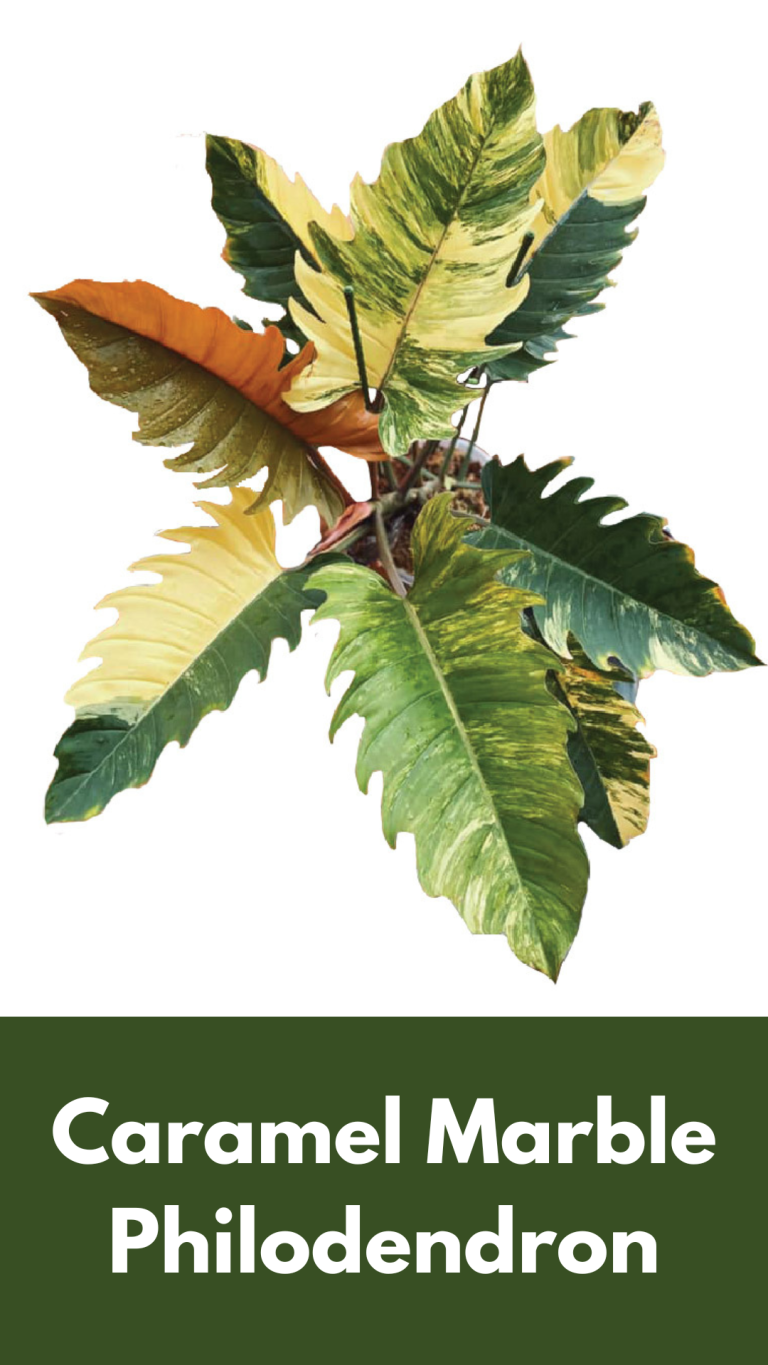Narra Tree
Narra Tree is one of the largest trees in the world grown for its superior quality wood. It is native to Southeast Asia, Northern Australia and Western Pacific Islands. Though it is found in different parts of the world, IUCN has listed it as an endangered plant. It is extinct in Vietnam, Srilanka and Peninsular Malaysia whereas there is need of government permission to cut this tree in the Philippines. This tree was declared as the national tree of the Philippines in 1934 by Governor-General Frank Murphy of the Insular Government of the Philippine Islands. It was made the national tree of the Philippines because it symbolises people’s strength and power.

The scientific name of the tree is Pterocarpus indicus. Apart from this, Narra Tree is known by several other names in different parts of the world. Some of the common names are:-
➡️Guinea rosewood, Burma rosewood, angsana, asana, amboyna, Andaman redwood,mukwa And padauk.
Characteristics Of Narra Tree
Narra Tree is a deciduous plant which can grow up to the height of (30-40) Meters. The diameter of its stem can reach to 2 Meters. The crown of this tree covers a large area making a dome shape which makes it very attractive to look at. Due to its spreading nature, it is grown on the sides of roads and in the middle of the park. The branches are dropping trying to touch the ground.
The tree is mainly found in the Philippines. The cultivation of the tree is increasing in open forests, slopes, coastal forests, seasonal swamps, and rocky shores, and it is also propagated in villages and gardens. It can be propagated by both sexual and vegetative methods. Sexually by seeds and vegetative by cuttings. Growing a Narra Tree by seeds takes more time in comparison to cuttings. It prefers calcareous (Slightly Alkaline) soil and open area. After sowing seeds in the nursery, They will be ready for transplantation after 6 months. The tree is fast growing (2 Meters In A Year) and matures at the age of (4-5) years. It is a perennial tree that can survive for many years. The oldest known Narra Tree is 60 years old.
Growing Conditions
The tree prefers open areas. It is found growing from sea level to an altitude of 1300 masl. Places with mean annual precipitation of (900-4000) mm and temperature of (22-32) °C are favourable for this plant. It can tolerate long dry seasons (4-6) months, salt and termites.
Botany Of Narra Tree
As already discussed, The scientific name of this tree is Pterocarpus indicus. It belongs to the Pea family (Fabaceae). The botanical classification of Narra Tree is given below:-
| Domain | Eukaryota |
| Kingdom | Plantae |
| Phylum | Spermatophyta |
| Subphylum | Angiospermae |
| Class | Dicotyledonae |
Under Botany, We will look into its Flowers, Leaves, Fruits, Trunk and Roots in detail.
• Narra Tree Flowers
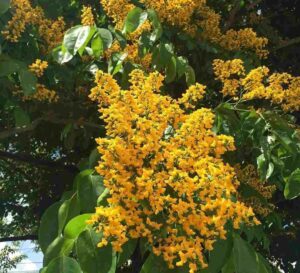
The flowers of Narra Tree are axillary. Inflorescence is raceme. The flowers occur in buch. They are yellow in colour with an orange tint. Flowering season ranges from February to May. They have a sweet fragrance and are showy in nature. The length of the flowers is 1.5 cm. The flowers attract lots of bees which ultimately contributes to the formation of honey. Young flowers are edible.
• Leaves
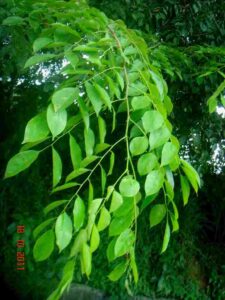
The leaves come in an alternate pattern which contains small hairs on one or both sides. Leaves are compound pinnate with (9-12) leaflets. They are large ovate to elliptical in shape with an acuminate tip. Leaves are (15-22) cm long and (25-35) cm wide. Young leaves are also edible.
• Fruit
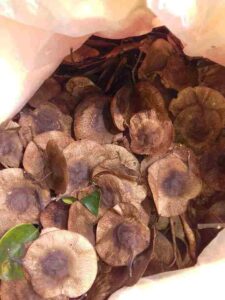
The Narra Tree contains small fruits which are covered by membranous wings(Pod) of (4-6) cm in diameter. The Pod is disc shaped which is hairy when young and later turns to smooth. In the center part of the fruit, there may be one or two monocotyledonous seeds. The fruit ripens at the age of (4-6) years and it turns to purple when dried.
• Trunk
Narra Tree has a medium sized trunk with 2 m diameter. The trunk is covered with rough and scaly bark. The base of the trunk has more diameter and tapers as it goes upward.
• Roots
The Narra Tree has fibrous roots which spread to a large area. As the fibrous roots expand to a large area, It prevents soil erosion.
Narra Tree Wood
This tree is cultivated for its amazing wood. The wood is super high quality which is used to make high end furniture like that from Sagwan Tree Wood. The wood is usually red or rose colour variegated with yellow which makes furniture beautiful. The wood of Narra Tree is heavy and the colour patterns make it unique from other woods.
Narra Wood is Termite resistant, Rot resistant and Rose scented. This wood is used to make Musical Instruments, Wood Carvings, Cartwheels. As it is easy to work on, It is preferred by carpenters. This wood is also used to make home furniture like Beds, Tables, Chair, Flooring and Many More. Moreover, It is highly durable wood. The furniture made from its wood can be used for several years.
Furnitures Made From Narra Wood

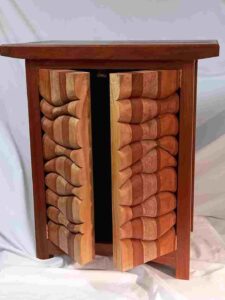
Uses/Benefits
Narra Tree has all aesthetic, medicinal and economic importance which are listed below:-
• Narra Tree has premium quality wood which has high market value and demand for making high end furnitures.
• Flowers are a great source of honey as bees spend their day roaming around this tree flower.
• The infusion of leaves are used to make Shampoo.
• The wood is the source of red dye and gum, kino.
• Young leaves are used to treat boils, prickly heat and ulcers.
• Shredded bark of the Narra Tree is used to treat Diarrhea and dysentery.
• Juice extracted from the roots of the tree is used to treat syphilitic sores.
• Narra is a source of lignum nephriticum, used to treat diuretics in Europe during the 16th to 18th centuries.
• It is a beautiful tree which is used as a decorative tree in parks. It is also planted at the sides of roads. Moreover, It contributes to ecosystem and eco diversity.
Conclusion
Thus, the Narra Tree is a remarkable gift from mother nature which has multiple uses. It can be planted in parks and roadside. Unfortunately, Due to its high wood value, People are cutting it extensively which has led to it becoming an endangered species. So, It is our solemn duty to protect and preserve it. Why not plant one Narra Tree and contribute to biodiversity.
Also Read:-

